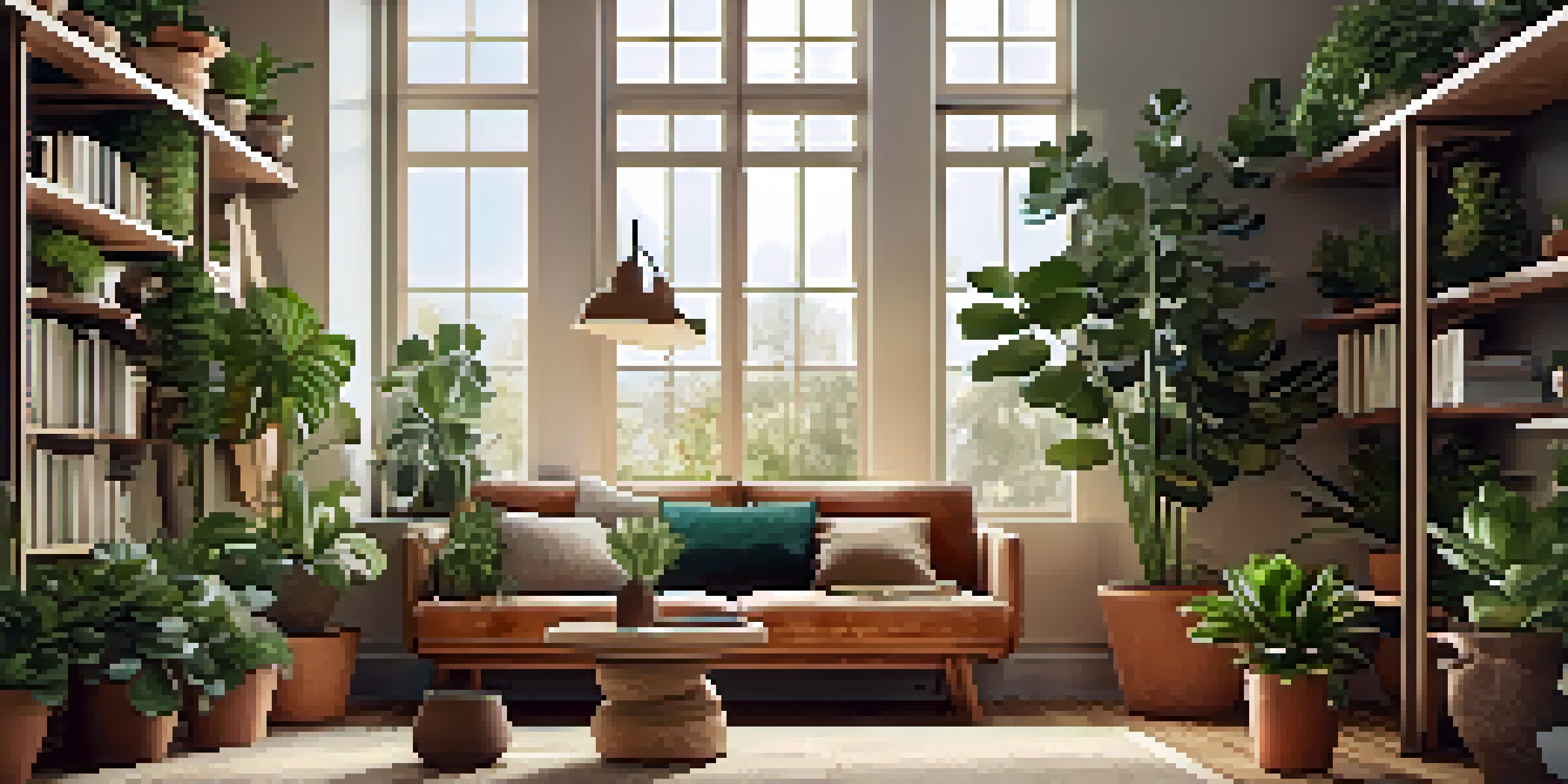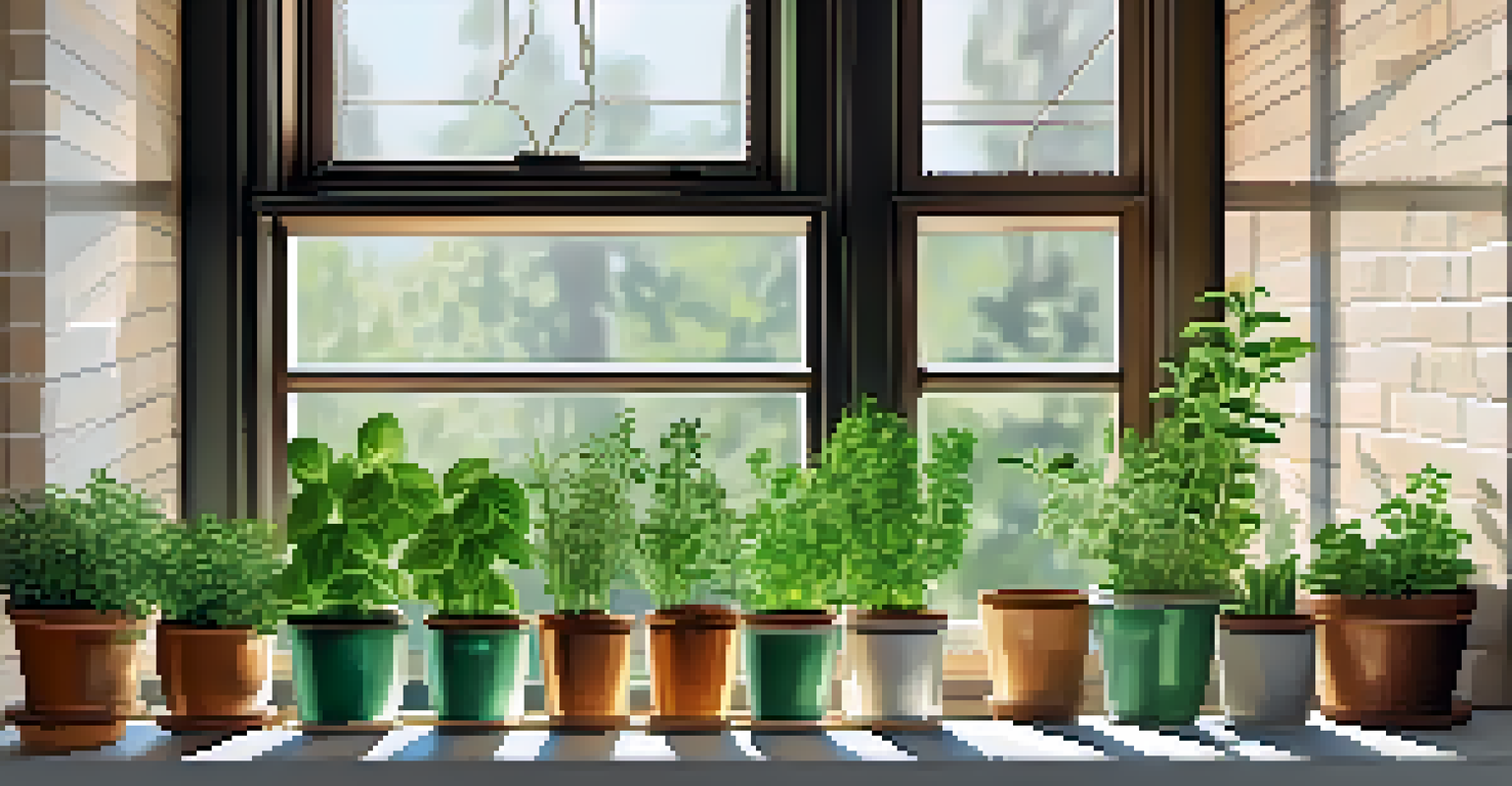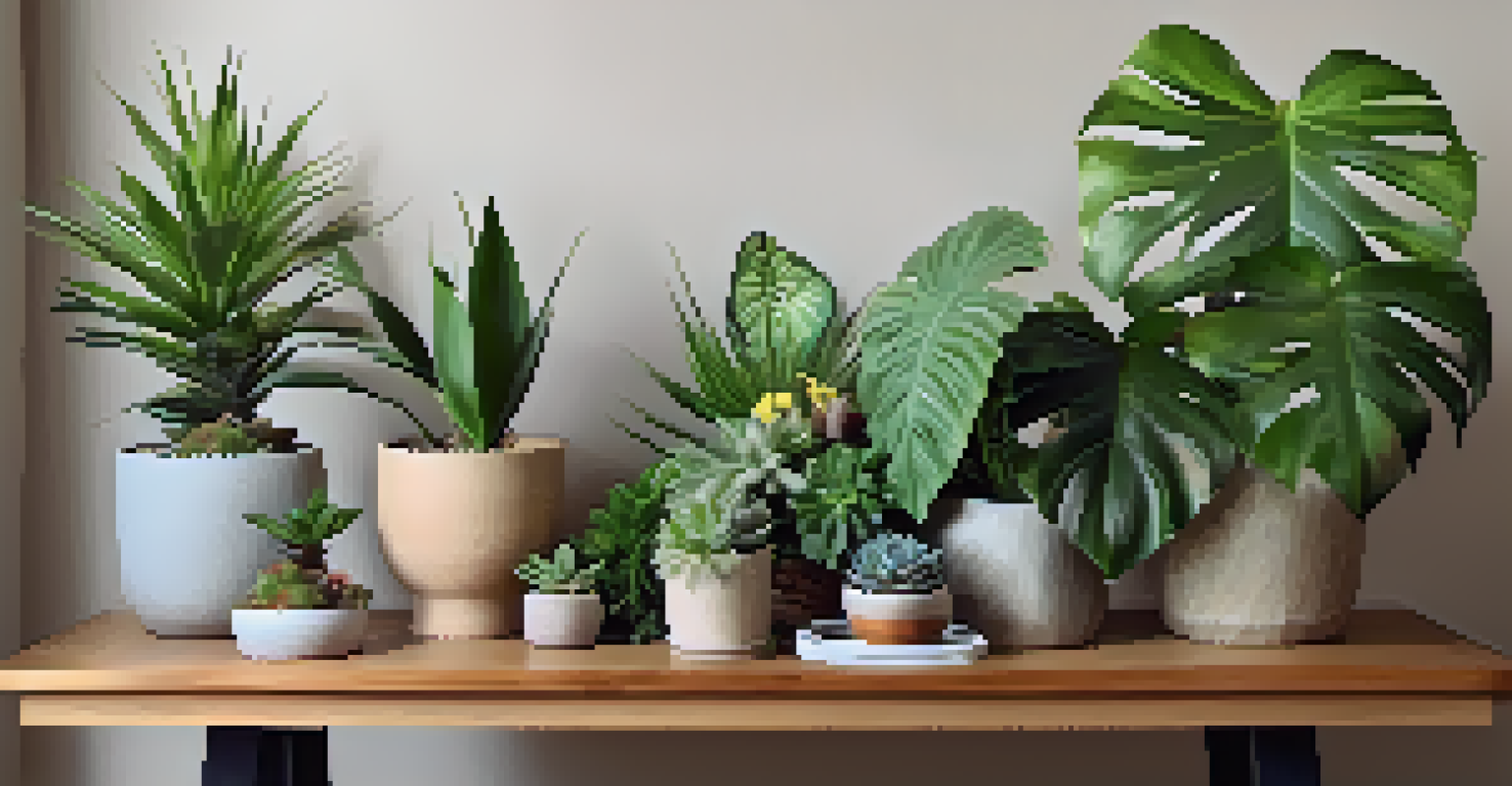Plant Styling: Tips for Arranging Plants in Your Home

Understanding the Basics of Plant Styling in Your Home
Plant styling is about more than just placing greenery around your home; it's an art that can enhance your space's aesthetic. By understanding the basics, you can create a harmonious environment that reflects your personality and style. Think of plant styling like curating a collection of art pieces, where each plant contributes to a larger narrative of your home.
Plants are like friends. They bring color to your world.
Start by considering the mood you want to create. Do you prefer a calming oasis or a vibrant jungle? The type of plants you choose and their arrangement can significantly influence the ambiance. For instance, tall plants like fiddle leaf figs can create a striking focal point, while smaller succulents are perfect for adding subtle charm.
Additionally, the size and shape of your plants matter. Mixing various heights and textures adds depth and visual interest. Just like in a well-composed photograph, contrast is key to drawing the eye and making your space feel dynamic and inviting.
Choosing the Right Plants for Your Space
Selecting the right plants is crucial for successful plant styling. Consider factors such as light conditions, humidity levels, and your lifestyle. For instance, if you have a busy schedule or limited natural light, low-maintenance plants like snake plants or pothos are excellent choices.

On the other hand, if you’re a plant enthusiast willing to invest time and care, you might opt for more demanding varieties like orchids or fiddle leaf figs. Keep in mind that the right plants should not only fit your aesthetic but also thrive in your environment.
Art of Plant Styling at Home
Plant styling enhances your space's aesthetic by creating a harmonious environment that reflects your personality.
Lastly, don't forget about the theme of your decor. Whether you lean towards bohemian, minimalist, or industrial styles, there are plants that can complement your chosen aesthetic. For example, a hanging philodendron can beautifully accentuate a modern space, while cacti can add a quirky touch to a rustic theme.
Exploring Different Plant Arrangement Styles
Just like fashion, there are various styles of plant arrangements to choose from. A popular approach is the 'focal point' style, where one or two standout plants take center stage, surrounded by smaller companions. This creates a layered look that draws the eye.
The best time to plant a tree was twenty years ago. The second best time is now.
Alternatively, you might consider the 'grouping' style, where plants of similar sizes and types are clustered together. This method not only simplifies care routines but also creates a lush, cohesive look. Imagine a small garden brought indoors, bursting with life and color.
Lastly, don't overlook the beauty of asymmetry. An off-balance arrangement can evoke a sense of naturalness, as if the plants are growing wild in their environment. Play with heights and shapes to discover what feels right for your space.
Utilizing Plant Stands and Shelves for Height Variation
Incorporating plant stands and shelves is a fantastic way to introduce height variation into your arrangements. Using different levels creates visual interest and allows you to showcase a wider variety of plants. Just like a tiered cake, the layers can make the arrangement more appealing.
Consider using a combination of floor stands, wall-mounted shelves, and hanging pots to create a dynamic display. This not only maximizes your space but also helps plants receive adequate light. Imagine a corner filled with cascading vines hanging from a shelf above a tall plant stand – it’s a delightful way to add depth.
Choosing Plants for Your Lifestyle
Selecting the right plants involves considering light conditions and your lifestyle to ensure they thrive in your space.
When choosing stands and shelves, think about the materials and colors that will complement your decor. Rustic wood can add warmth, while sleek metal can lend a modern touch. By harmonizing your plant displays with your furniture, you create a cohesive look throughout your home.
Creating a Balanced Color Palette with Plants
Just like painting a canvas, a balanced color palette can elevate your plant styling. Consider the shades of green, as well as the colors of the pots and the plants themselves. For instance, the vibrant green of a monstera can be beautifully offset by a rustic terracotta pot, creating a lovely pop of color.
You can also incorporate flowering plants to introduce additional hues. Think of colorful blooms as accents in your arrangement, similar to how you might use throw pillows to brighten up a sofa. The key is to maintain a sense of harmony and avoid overwhelming the space with too many competing colors.
Finally, remember that textures play a significant role in color balance. Combining smooth-leaved plants with those that have rough textures can create a richer visual experience. Consider how different plant types interact not just in color, but also in their tactile qualities.
Incorporating Plants into Your Existing Decor
Integrating plants into your existing decor can seamlessly enhance your space. Start by observing your current arrangement – where do you feel there’s room for a little greenery? Whether it’s on a bookshelf, a coffee table, or a windowsill, plants can fill in those gaps beautifully.
For example, if you have a collection of books on a shelf, a small potted plant can serve as a refreshing contrast. It's like adding a splash of color to a black-and-white photo, bringing the whole arrangement to life. Imagine a tiny fern nestled between your favorite novels – it’s an inviting touch.
Maintaining Indoor Plant Health
Regular maintenance and attention to each plant’s specific care needs are essential for keeping your indoor plants vibrant and healthy.
Additionally, consider the function of each room. In a kitchen, herbs in stylish pots can be both decorative and useful, while larger plants in living areas can create a welcoming atmosphere. By thoughtfully placing plants, you enhance the overall vibe of your space without drastic changes.
Maintaining Your Indoor Plants for Longevity
Once you’ve styled your plants, maintaining their health is key to ensuring they thrive. Regularly check for signs of overwatering or pests, as these can quickly affect your beautiful arrangement. Think of it like checking in on a friend – a little attention goes a long way.
Additionally, make sure you’re aware of each plant's specific care needs. While some may thrive in bright light, others prefer a shadier spot. Grouping plants with similar requirements can simplify your care routine and keep your indoor jungle looking vibrant.

Lastly, don’t forget to occasionally refresh your plant arrangement. As plants grow, they may require repotting or repositioning for optimal light. Just like fashion trends evolve, your plant styling can change over time, keeping your home feeling fresh and lively.